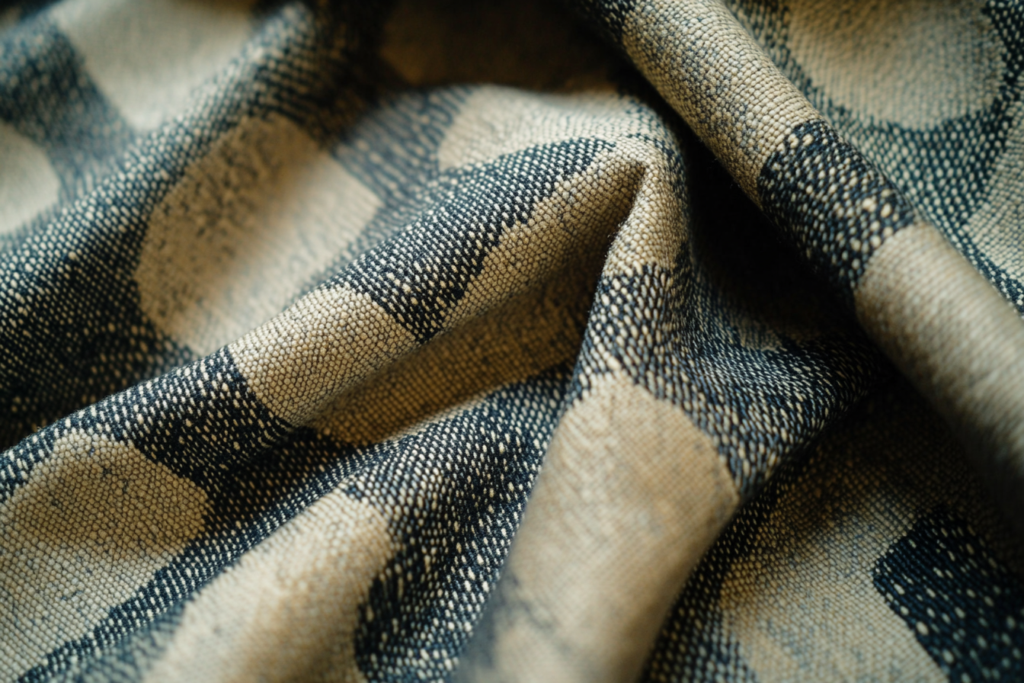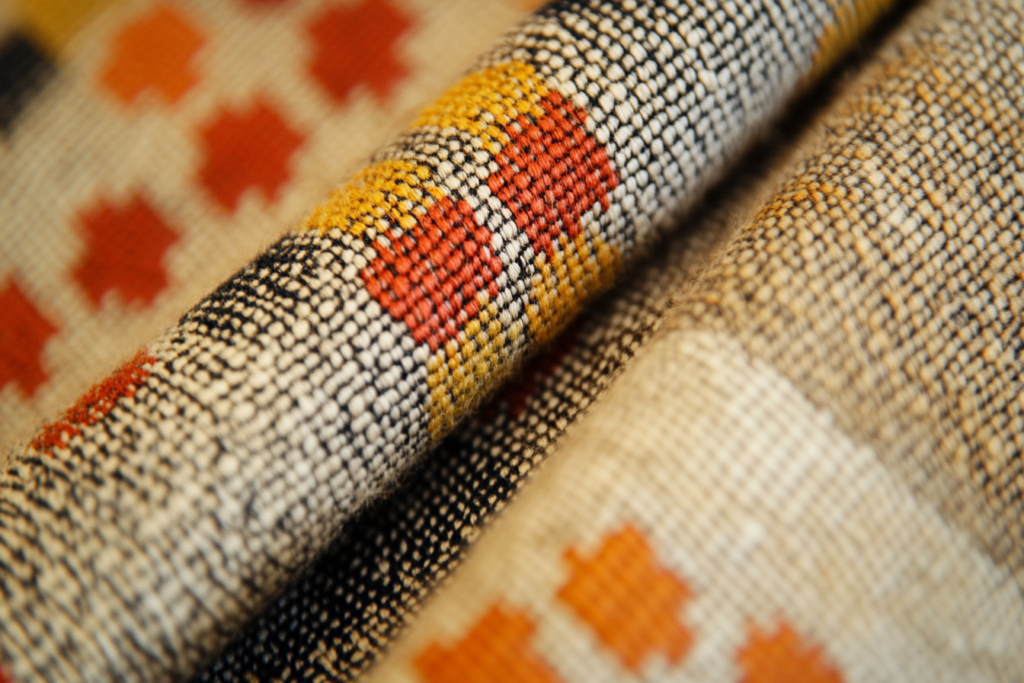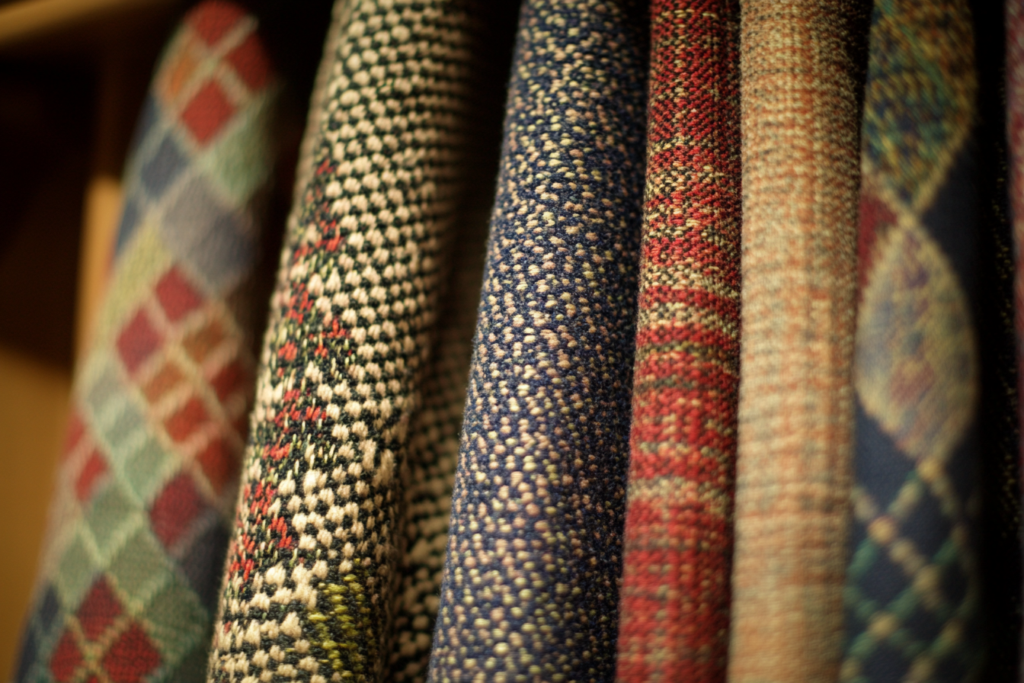Introduction: What is Dobby Fabric?
Dobby fabric is a textile with small, intricate geometric patterns woven directly into the fabric. This type of fabric is created using a special weaving technique on a loom, called the dobby loom, which is capable of producing these fine, detailed patterns. The term “dobby” refers to both the loom and the style of weaving used to create the fabric.
Dobby fabrics are often used in a variety of applications, from casual wear to formal attire, due to their unique texture and appearance. The patterns can range from simple, geometric shapes to more elaborate motifs, making dobby fabric an elegant and versatile material. It has gained popularity due to its versatility, durability, and ability to add depth and interest to garments.


How Dobby Fabric is Made
- The Dobby Loom:
- The key feature that distinguishes dobby fabric from other textiles is the use of the dobby loom, a specialized type of loom that controls the weaving of small patterns. The dobby loom can raise and lower individual warp threads, which allows for the creation of different patterns, such as stripes, checks, or more intricate geometric shapes. This process contrasts with regular plain weaving, which uses a basic over-and-under pattern.
- Weaving Process:
- The weaving process involves interlacing threads in such a way that the design emerges as part of the fabric’s structure. Warp threads (the lengthwise threads) are manipulated to create textures and patterns, which are then woven together with weft threads (the crosswise threads) to form the fabric. Dobby fabric is typically lighter than jacquard fabric but still offers a substantial texture due to the woven patterns.
- Patterns and Design:
- The patterns found in dobby fabric are often small geometric motifs like dots, squares, or diamonds, and are regularly spaced across the fabric. These patterns can be subtle or bold, depending on the intended design and the material used. Some fabrics may have a fine texture with almost imperceptible designs, while others feature more noticeable geometric motifs.
Common Uses of Dobby Fabric
- Shirts and Blouses:
- One of the most common uses for dobby fabric is in the creation of shirts, especially formal button-down shirts. The texture and patterns in the fabric provide a subtle yet sophisticated design, making it a favorite for office wear and business attire. The breathable nature of dobby fabric also makes it comfortable to wear in warmer weather.
- Home Textiles:
- Dobby fabric is also used in home textiles, such as curtains, bed linens, and upholstery. The unique texture and pattern of the fabric add a luxurious and refined look to home décor. The durability of dobby fabric makes it ideal for items that require both aesthetic appeal and strength.
- Accessories:
- Dobby fabric can also be used for accessories like scarves, pocket squares, and ties. Its ability to hold geometric patterns while remaining lightweight and flexible makes it an ideal material for small fashion accessories.
- Evening and Special Occasion Wear:
- The elegance of dobby fabric makes it a popular choice for evening wear and special occasion garments. The fine patterns and textures lend an air of sophistication to dresses, skirts, and other formal attire.
Advantages of Dobby Fabric
- Textural Appeal:
- The main attraction of dobby fabric lies in its textured patterns, which can add a rich, tactile quality to garments. The designs are woven into the fabric, ensuring that the texture is durable and does not fade with time or wear.
- Breathability:
- Since dobby fabric is typically made from natural fibers like cotton, it remains lightweight and breathable. This makes it ideal for summer clothing or garments worn in warm climates.
- Durability:
- The weaving technique used to create dobby fabric results in a strong and durable textile. Its resistance to wear and tear makes it a good choice for both clothing and home furnishings that will undergo frequent use.
- Versatility:
- The small geometric patterns and the variety of colors in dobby fabric make it versatile. It can be used in both casual and formal settings, depending on the design and weight of the fabric. Whether used for shirts, dresses, or home textiles, dobby fabric adds depth and visual interest to any item.
Care Instructions for Dobby Fabric
- Washing:
- Dobby fabrics, especially those made from natural fibers like cotton, are generally machine washable. However, to preserve the integrity of the fabric and the woven patterns, it’s advisable to use a gentle cycle and avoid high-temperature settings. Always check the care label for specific instructions.
- Ironing:
- Dobby fabric can be ironed on a low or medium heat setting, though it’s important to avoid direct contact with high temperatures on delicate fabrics. The textured patterns may require careful ironing to avoid flattening or damaging the texture.
- Storage:
- When storing dobby fabric garments, ensure that they are kept in a dry, cool place to prevent any damage or fading. Avoid hanging dobby fabric in direct sunlight for prolonged periods to preserve the color and texture.
Conclusion: Why Dobby Fabric is a Timeless Choice
Dobby fabric is a versatile, durable, and visually appealing textile that adds a unique texture and depth to a wide range of garments and home textiles. Whether used in shirts, blouses, or home décor, the subtle patterns woven into dobby fabric give it a sophisticated and timeless quality. Its breathability, durability, and ability to hold geometric designs make it an enduring favorite in both traditional and contemporary fashion.
From formal office wear to special occasion outfits, dobby fabric continues to be a staple of stylish, high-quality textiles that stand the test of time.



